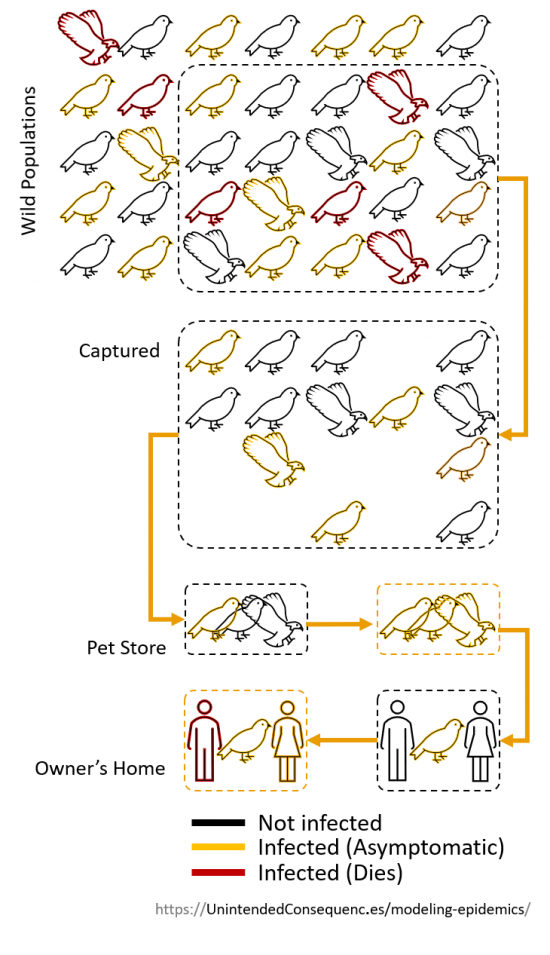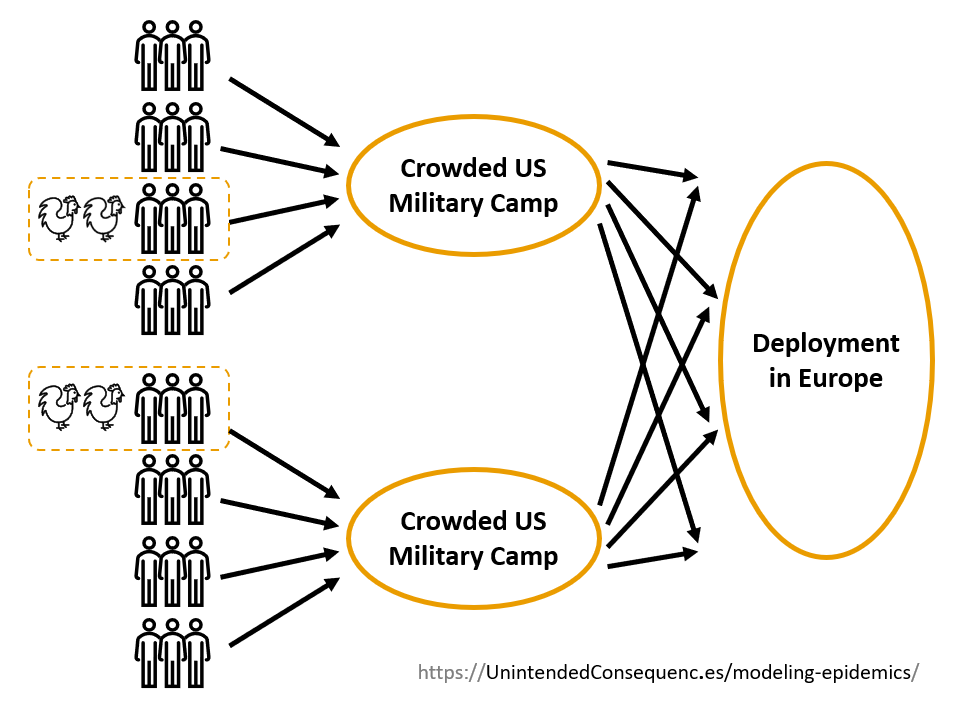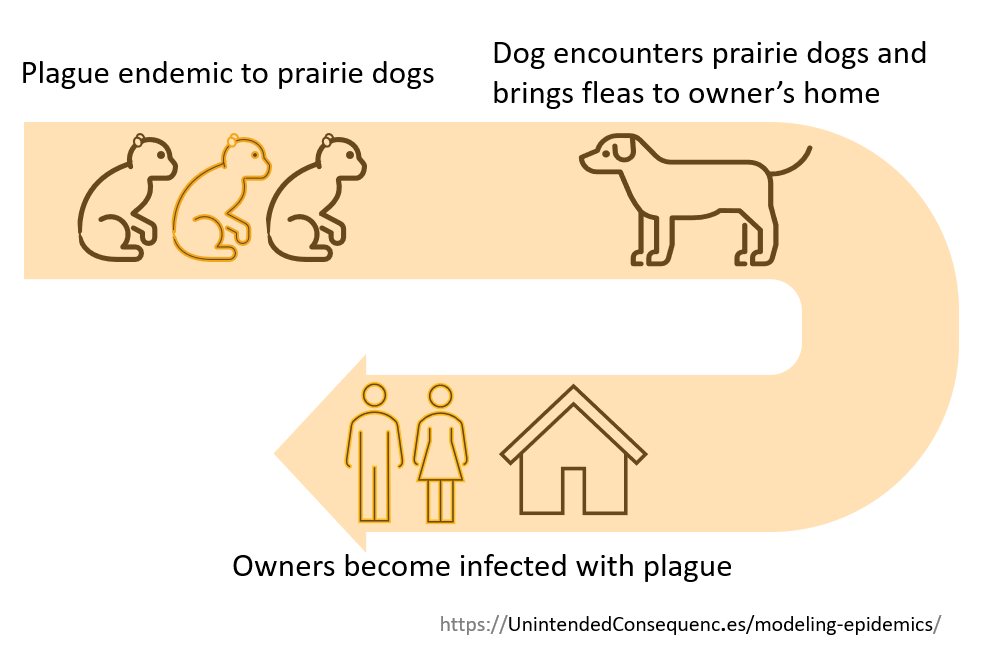I’ve written about high-profile diseases already (here, here, here, and many more). There’s something timeless about studying the way diseases spread and impact systems, especially when it comes to second-order effects. So let’s map out a few disease scares from the past century. Here’s a systems map look at parrot fever, 1918 flu, and modern-day bubonic plague.
I’m not including COVID-19 in the bunch since I’ve written about it frequently and there’s still a lot we don’t know about the system that led to its spread. Then again, there is also a lot we don’t know about the spread of the diseases below, but the perspectives on them are more static.
I decided to write this piece after seeing how hidden the pathways to illness can be and how straightforward the solutions can seem after the system is understood.
Psittacosis (Parrot Fever)
You’ve probably never heard of it, but in 1929, deaths from the then unknown disease psittacosis (also called “parrot fever”) scared a lot of people who thought it might be a new epidemic.
It took some sleuthing, but the commonality between people affected by this disease was their proximity to imported birds such as parrots and parakeets.
Keeping birds in the home as pets was a relatively new fashion. Salesmen sold birds door to door.
But even with importation of infected birds, we might have avoided the local spread of psittacosis if not for crowded conditions in pet stores and the easier spread of psittacosis among the birds, asymptomatic healthy seeming birds, and then close conditions between birds and human owners in the home.
Here’s a map of psittacosis flowing from wild populations to the pet owners.

What ended the parrot fever panic? Understanding how the disease spread from birds to humans and then stopping it along the way, rather than the source of imported birds (which the pet store industry fought). Remember that many birds were asymptomatic carriers for psittacosis and unless all bird imports were banned, there would continue to be new arrivals with the disease.
The solution was to treat the birds themselves. This was done through the antibiotic tetracycline and birdseed treated with chlortetracycline. Like this.

We should also remember that the people who originally caught birds in tropical parts of South America had known for generations to avoid any sick birds. That knowledge was temporarily set aside when there was greater demand for the birds.
1918 Flu
There are at least four theories I’ve seen for the origin of this deadly flu. Depending on the science you trust, or your politics, you might choose one over another. I’ll mention each briefly but will show the system map for the first one, which tends to be the theory I see most often shared.
- Origin theory: Farms in Kansas (the 1918 flu is believed to be carried by birds) where earliest US outbreaks appeared to soldiers going to military camps.
- Origin theory: British military base in France. Convergence of animals and people in close quarters.
- Origin theory: Carried by some of the 100,000 workers from China who traveled to Europe at the time. Possibly already present in China the year before since low fatality rates noticed from the flu in 1918 and later.
- Origin theory: Horses shipped from US to allied forces in Europe. Close contact of horses and sailors for the Atlantic voyage.
Here’s a map of how the first origin theory above might look.

The key above is the wide-scale, quick mixing of people in close quarters. A small number of infected could then spread the flu to many. Before the sick start to show symptoms they are able to infect many others, who go on to infect many more. Even with all that mixing, if the disease were no more deadly than a typical flu, we might not talk about it today. Instead, a higher mortality rate and the greater mixing combined to kill perhaps as many as 50 million people — more than died in WWI.
The Plague Today
The plague — a disease of several forms cause by the Yersinia pestis bacterium — had tremendous impact on world history. At least hundreds of years ago. We don’t think much about it today. But interestingly, until COVID-19 reminded everyone of the 1918 flu, we did talk about the plague more often than that more recent pandemic.
The plague bacterium is still with us but it affects much smaller numbers of people today. The pathways of infection have reduced — fleas, rats, close quarters — along with increased knowledge of how to treat it. But in the US, around 10 people a year still die from the plague.
Plague is endemic to prairie dog (and other rodent) communities in the US. When someone’s pet dog, especially in the southwest US, encounters an infected prairie dog, it may also collect fleas that carry the plague bacterium.

Consider
- The system is often invisible.
- A change in the system (asymptomatic birds as pets, newly built closely packed military quarters during wartime spread infections, dogs that pick up prairie dog fleas and bring them home) leads to chaos.
- Understand the system to break the system.